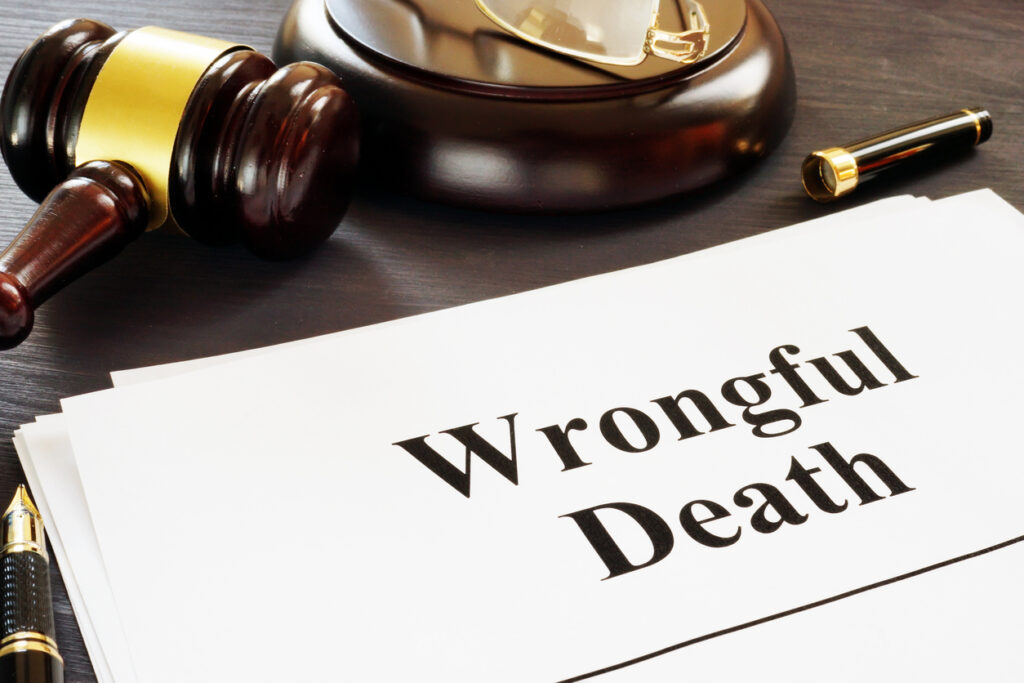Losing a loved one because of someone else’s carelessness creates a maze of legal decisions at the hardest possible time. Families need clear, practical guidance on eligibility, deadlines, and the types of compensation New York law recognizes. This article walks you step by step through who can file, what must be proven, and how courts value both financial contributions and intangible support that a family member provided. You will also learn how expert witnesses quantify losses and how recent decisions shape outcomes in today’s courts. If you’re unsure where your claim stands or how soon you must act, Check Now to confirm your rights and preserve crucial evidence. When the process feels overwhelming, a seasoned New York Wrongful Death Lawyer can help your family make informed, timely choices.
Who Can File a Wrongful Death Claim Under New York Statute
New York law centralizes wrongful death claims through the estate, not individual family members. That means the person who files is typically the decedent’s court-appointed personal representative—the executor named in a will or the administrator appointed by Surrogate’s Court when there is no will. The claim is brought for the benefit of statutory “distributees,” such as a spouse, children, or, in some cases, parents who depended on the decedent. While multiple relatives may be affected, New York’s Estates, Powers and Trusts Law (EPTL) designates a single representative to pursue compensation and to manage distribution later. This structure prevents duplicate lawsuits and ensures a unified strategy focused on preserving evidence and building the strongest negligence case.
Estates, Distributees, and How Proceeds Are Shared
Once a wrongful death case resolves, the court oversees how funds are distributed to eligible family members under EPTL 5-4.4. Priority does not always follow who filed; it follows who suffered a legally recognized pecuniary loss, which can include financial support and the value of parental guidance and household services. Spouses and minor children often receive the largest shares, while adult children and parents may recover based on demonstrated dependency. Because distributions require both legal and financial analysis, the personal representative should document each beneficiary’s losses early and keep meticulous records of expenses like funeral costs. A New York Wrongful Death Lawyer can help the representative balance fiduciary duties, resolve disputes among distributees, and secure Surrogate’s Court approval so that distributions are both fair and final.
Proving Negligence and Identifying Liable Parties After a Fatal Accident
To recover in a wrongful death case, families must establish the familiar negligence elements: duty, breach, causation, and damages. In practical terms, that means proving the defendant had a legal responsibility to act carefully, violated that standard, and caused the death and resulting financial losses. Evidence comes from many sources: scene photos, vehicle data modules, maintenance logs, workplace safety records, surveillance footage, and eyewitness testimony. In New York, comparative negligence may reduce recovery if the decedent shared fault, but it does not bar the claim. Early scene preservation, formal evidence requests, and prompt expert retention often make the difference between a contested allegation and persuasive, fact-based proof.
Mapping Liability Across Multiple Defendants
Fatal incidents frequently involve overlapping fault, and New York law allows recovery from all responsible parties. A negligent driver and their employer may be liable under vicarious liability; a property owner and a maintenance contractor may share premises liability; and a manufacturer may face strict liability for a defective product. In alcohol-related crashes, dram shop claims may be available against bars that unlawfully served visibly intoxicated patrons. When municipalities are involved—such as claims against transit agencies or cities for roadway hazards—additional procedural rules apply, including strict notice requirements. Because identifying every viable defendant broadens insurance coverage and increases the odds of full compensation, families benefit when their legal team maps the whole liability chain, not just the most obvious actor.
Understanding Economic vs. Non-Economic Damages in 2025
New York’s wrongful death statute is distinctive in how it defines recoverable losses. The law centers on “pecuniary injuries,” a term that covers lost wages and benefits, the value of household services, and the economic component of lost parental guidance. Families can also recover funeral expenses and, in appropriate cases, the decedent’s conscious pain and suffering through a related survival action. However, the statute does not generally permit damages for emotional grief or loss of consortium—a limitation that continues to shape outcomes in 2025. Legislative proposals have sought to expand non-economic categories, but unless and until they are enacted, courts remain anchored to established definitions of financial harm.
Practical Examples of Recoverable Losses
Courts analyze what the decedent contributed and what the family has lost in monetary terms. For a salaried worker, experts project career earnings, fringe benefits, and retirement contributions, then discount them to present value. For a parent who provided extensive childcare, tutoring, transportation, and home maintenance, those services are priced using market rates to reflect what replacement care would cost. Students, retirees, and self-employed individuals are evaluated based on realistic earning capacity, life expectancy, and the economic value of services they regularly provided. A New York Wrongful Death Lawyer assembles the documentation—pay records, tax returns, caregiver schedules, and expert reports—to present a complete and credible picture of the family’s pecuniary losses.
The Role of Expert Witnesses in Estimating Financial Losses
Expert testimony is often the backbone of a persuasive damages presentation. Economists model expected lifetime earnings by considering education, industry, career trajectory, and regional wage data; they also account for benefits and the replacement cost of household services. Actuaries and statisticians incorporate life and work-life expectancy tables, while medical and vocational experts address the decedent’s health history and career potential. For self-employed decedents, forensic accountants parse business income, owner draws, and capital outlays to produce a reliable net earnings figure. The goal is a clear, methodologically sound estimate that judges and juries can trust—one that connects directly to the family’s day-to-day financial reality.
Methodologies Courts Find Persuasive
Courts look for transparent, conservative inputs and recognized models. That includes using published government data for wage growth, reasonable assumptions for raises and promotions, and defensible discount rates to express future losses in today’s dollars. Reports should separate income from fringe benefits, and distinguish household services from childcare or eldercare so each can be valued distinctly. Documentation matters: W-2s, 1099s, invoices, calendars, and statements from coaches or teachers can corroborate routines and responsibilities the decedent handled. If you are unsure what evidence you have—or what gaps exist—Check Now to create an inventory, so your expert team can build projections supported by solid data rather than guesswork.
Filing Deadlines and Statutory Requirements for Families
New York imposes strict timelines that start fast and leave little room for error. The general statute of limitations for wrongful death is two years from the date of death, with specific rules for cases involving criminal proceedings or municipal defendants. Before filing suit, the estate needs a court-appointed representative, so initiating Surrogate’s Court proceedings quickly is critical. Claims against cities, counties, or public authorities often require a Notice of Claim within 90 days—deadlines that can be unforgiving if overlooked. Because late filings risk dismissal regardless of the claim’s merits, families should Check Now whether any special notice, appointment, or tolling provisions apply to their situation.
Step-by-Step Timeline From Death to Filing
In practice, most cases unfold in a set sequence. The family secures the death certificate and meets with counsel to assess potential claims, insurance coverage, and defendants. The estate petition for letters testamentary or administration is filed, and preliminary investigation begins while the appointment is pending. If a public entity may be liable, counsel prepares and serves the Notice of Claim and schedules the statutory examination. Once the personal representative is appointed, the complaint is drafted, expert consultations are formalized, and litigation proceeds within the applicable deadline. At each step, a New York Wrongful Death Lawyer coordinates evidence preservation, tracks time limits, and ensures compliance so the claim proceeds on the merits rather than stumbling over procedure.
Recent New York Cases Influencing Wrongful Death Compensation
While statutory language evolves slowly, court decisions continually refine how damages are proven and awarded. New York appellate courts have reaffirmed that lost parental guidance is a compensable pecuniary loss, encouraging detailed proof of mentoring, academic support, and life-skills training the decedent provided. Decisions continue to recognize pre-impact terror and conscious pain and suffering where supported by evidence, adding meaningful value in survival actions. Courts have also emphasized the need for rigorous expert analysis, pressing parties to use recognized statistics and to explain assumptions about future income and household services. Comparative negligence rulings remind families that partial fault can reduce awards but rarely defeats them, reinforcing the importance of a robust liability investigation.
What These Trends Mean for Your Family’s Claim
Taken together, recent trends reward preparation, documentation, and targeted expert work. Families who collect detailed records—work schedules, school communications, chore lists, coaching logs, and caregiving calendars—equip their experts to translate everyday contributions into credible dollar figures. Thorough liability mapping brings additional insurers and defendants into the case, increasing the likelihood of full recovery even when one party’s coverage is limited. Because precedents evolve and procedural traps remain, partnering with a New York Wrongful Death Lawyer early helps align strategy with current law and local court practices. If you have questions about eligibility, deadlines, or the strength of your evidence, Check Now and take the first step toward safeguarding your family’s legal remedies.

